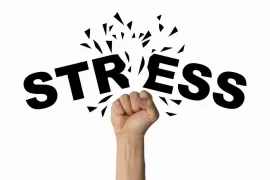
By: Eruke Ojuederie
While world women advocate for equal rights for women and the fight against gender violence across regions, a vital part of this discourse has failed to be addressed. Though part of the umbrella name gender violence, acid attacks have remained rampant most especially in developing nations with little or no measures put in place to curb this human atrocity. Of what use will the fight against gender violence be if it does not protect those prone to attacks for speaking their minds on issues of the heart?
Acid attacks are violent assaults aimed at destroying some portions of the victims’ body. In most cases, this comes as a result of a disagreement or as is the case with most women, is the punishment for rejection and turned-down advances – usually sexual. Those who suffer from this attack face a risk of blindness, permanent scars, and sometimes death depending on the degree of the burn. Women with such experiences find it had to face the world because they are grouped among the disadvantaged.
According to the Acid Survivors Foundation India (ASFI), the majority of acid attack victims are women, and victims are attacked over domestic or land disputes, a rejected marriage proposal or spurned sexual advances.
Statistics show a clear increase in the number of acid attacks in the South Asian country in recent years. At least 106 such attacks were reported in 2012, according to the Acid Survivors Foundation India (ASFI). And that figure rose to 122 in 2013 and 349 in 2014. Activists say that figure climbed to over 500 in 2015.
According to a 2011 report published by the Cornell Law School – Bangladesh, India, and Cambodia have the highest incidences of acid attacks in the world. Reports have it that unlike many other chemical susbstances, acid is easily accessible in these places, and can go for as low as Rs 30 over the counter. Experts have identified this as one of the factors that account for the rising rates of acid attacks in developing countries. A handful of these experts have advocated for a ban on the sale of this harmful product in departmental stores or some form of restriction but given its industrial importance, a ban may not come just yet.
Recently, the tale of Madhu Kashyap an acid attack survivor made the rounds. It showed the strength and unwavery determination she had towards fulfilling her dreams despite her predicament. Just for refusing marriage her face was disfigured at the age of 17. Presently, she manages a café called Sheroes at Agra run by Chhanv Foundation. The café serves as solace for women in the neigbourhood who have suffered from acid attacks as they make up the workforce.
Acid attack victims go through physical, emotional, and psychological challenges from the actual pain attached to the burning sensation felt at the moment of the attack, to the pains which accompany surgery; removing skin from other parts of the body to cover up that which was lost, and becoming the one person people never want to relate with merely because they cannot stand the sight of squeezed skin. This is not to forget the dead threats to family and friends who feel the need to bring the attackers to book. It doesn’t come as a surprise that a good number of acid attack victims make death wishes as they feel this is a better option than the feeling of isolation and dejection which comes as a result of their predicament.
Despite living in a world that has these women scarred emotionally and physically, it is amazing how female acid victims have found themselves again; drawing hope from the minutest things in their immediate environment even as they seek to leave normal lives, engage in regular jobs and activities, and most of all impacting on the lives of not only their kind but other young women who have lost hope after other terrible circumstances.
For Madhu Kashyap, once she got over her fears of public reaction, she got married and began to search for her dream job. Madhu says:“Today, if my attacker confronts me, I will tell him that what he did was to weaken me; but rather than becoming weak I have become stronger and living my life.” She is passionate about design and thinks that joining Vikas Malani’s Body Canvas workshop will help her to follow her passion. Body Canvas is a chain of tattoo studios collaborating with Chhanv by conducting free workshops for the victims.
It is commendable to note that in India acid attack survivors are now given rights under the Rights of Persons with Disabilities Act, 2016. Following a writ petition by survivor Laxmi Agarwal in 2006, the Supreme Court in July 2013, passed orders that led to the regulation of sale of acid, compensation for the victims, after care and rehabilitation of the survivors; limited compensation from the government, reservation in educational institutions and easier access to jobs – laws that would have remained rigid for another decade if not for the tenacity of survivors such as Laxmi.
Laxmi was attacked in Delhi’s Khan Market in 2005 by her acquaintances, Guddu and Rakhi. Laxmi was 15 at that time and the act was seen as revenge for Laxmi’s refusal to marry Guddu, her friend’s brother.
In 2009, Laxmi took up the challenge to walk outside without covering her face. “This was the biggest challenge, people’s reactions were bad and alienating,” she remembers. While Laxmi’s parents supported her throughout, her friends and relatives cut all communication. Laxmi decided to take the case to court, and the trial went on for four years. While Guddu was sentenced to 10 years in jail, Rakhi was imprisoned for seven years.
In 2013, Laxmi became associated with the acid attack movement; one month after Alok Dixit and Ashish Shukla started the ‘Stop Acid Attacks’ campaign, which culminated in the Chhanv foundation in 2014. They campaigned aggressively and started a discussion around acid violence in the country. Today, Laxmi is the director of the foundation and Alok Dixit is the campaign head.
Also, while women like Laxmi fight for the rights of victims of acid attacks, modern beauty and healthcare therapists uncover new ways to make these women confident again with beauty surgeries. This has helped to give a renewed hope to acid attack victims as they look forward to moving past their grieve and starting up a new life full of zeal.
This brings forth a new lesson for women across regions- one of hope that inspires us to do that which the world thinks is far from us, shattering man-made barriers, and stepping into that feminine glow which every woman is called to embrace.




